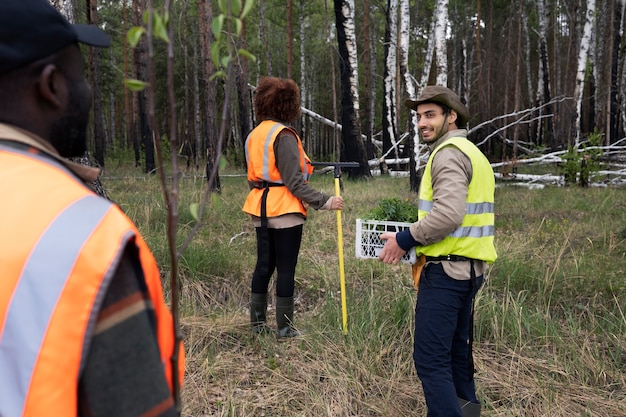Ensuring Compliance: The Crucial Steps Of Phase 1 Environmental Assessment
The Phase 1 Environmental Assessment is a critical step in real estate transactions, ensuring compliance with environmental regulations and identifying potential risks associated with a property. This assessment plays a pivotal role in understanding the environmental history of a site, helping stakeholders make informed decisions regarding property transactions, development, and investments.
Importance of Phase 1 Environmental Assessment
The primary objective of a Phase 1 Environmental Site Assessment is to assess the historical use of a property and identify any potential environmental concerns or liabilities. This process is crucial for several reasons:
Compliance with Regulations
Regulatory bodies often require a Phase 1 Environmental Assessment as part of due diligence before property transactions. It helps parties adhere to regulations set forth by bodies like the Environmental Protection Agency (EPA) in the United States or similar agencies globally.
Risk Identification
By conducting a Phase 1 Assessment, potential risks associated with a property can be identified. This includes recognizing possible soil contamination, hazardous material storage, or other environmental issues that could impact the property's value or future use.
Key Steps in Phase 1 Environmental Assessment
Historical Research and Site Inspection
The initial phase involves comprehensive historical research of the property and its surroundings. This includes reviewing historical records, aerial photographs, topographic maps, and conducting interviews with current and past owners or occupants. A thorough on-site inspection is also conducted to identify any potential sources of contamination.

Data Analysis and Review
After collecting information, environmental consultants analyze the gathered data. They evaluate the potential risks based on the property's historical uses and current conditions. This analysis involves comparing the findings with local, state, and federal regulations to determine compliance.
Reporting and Recommendations
A detailed report summarizing the findings, conclusions, and recommendations is prepared. This report outlines any identified environmental risks and suggests further steps, such as additional investigations or remediation measures, if necessary.
Compliance and Decision-Making
The final step involves using the assessment report to make informed decisions. Parties involved in the property transaction or development process can evaluate the risks and determine the best course of action to address any identified environmental concerns.
Regulatory Framework and Standards
The Phase 1 Environmental Assessment process operates within a well-defined regulatory framework set by governmental bodies. These regulations aim to protect public health and the environment by outlining the necessary steps to assess potential environmental risks associated with a property. Adhering to these standards is fundamental for ensuring the validity and acceptance of the assessment's findings.
ASTM Standards
In the United States, the American Society for Testing and Materials (ASTM) has established standardized procedures (ASTM E1527) for conducting Phase 1 Environmental Assessments. These standards outline the specific steps and methodologies that environmental professionals must follow during the assessment process.
Professional Expertise and Qualifications
Conducting a Phase 1 Environmental Assessment requires specialized knowledge and expertise. Environmental consultants or professionals with relevant qualifications and experience in environmental science, geology, engineering, or related fields are typically engaged to perform these assessments. Their expertise ensures the accuracy and reliability of the assessment results.
Continuing Education and Training
Staying abreast of the evolving regulatory landscape and emerging environmental concerns is crucial for professionals conducting these assessments. Continuous education and training enable them to navigate complex environmental issues, utilize updated methodologies, and maintain the highest standards of assessment practices.

Global Perspectives and Adaptation
The necessity for environmental due diligence transcends geographical boundaries. Countries worldwide recognize the importance of environmental assessments in property transactions and have established similar protocols, although specific regulations may vary. The core principles of identifying potential risks and ensuring compliance remain consistent across different jurisdictions.
Comprehensive Factors Influencing Phase 1 Environmental Assessments
- Site-Specific Considerations: Each property has unique characteristics and historical uses that necessitate a tailored approach to the assessment. Understanding the site-specific factors is crucial for an accurate evaluation.
- Community Engagement and Stakeholder Involvement: Engaging with the local community and relevant stakeholders can provide valuable insights into the property's history, potential environmental concerns, and community perceptions.
- Economic Implications and Property Value: Uncovering significant environmental issues during the assessment can impact property values and potential future uses. Understanding these implications is vital for investors and developers.
- Technological Advancements: Incorporating technological advancements, such as Geographic Information Systems (GIS) or remote sensing techniques, can enhance the efficiency and accuracy of data collection and analysis.
- Environmental Justice Considerations: Assessments should also consider potential impacts on neighboring communities and ensure equitable treatment and consideration of all affected parties.
- Insurance and Liability Coverage: Some transactions may require environmental insurance or liability coverage, and the findings of a Phase 1 Assessment can influence the availability and terms of such coverage.
- Long-Term Environmental Stewardship: Beyond the transaction phase, responsible environmental stewardship involves ongoing monitoring and, if needed, remediation efforts to ensure the property's sustainable use.
- Global Sustainability Initiatives: Aligning Phase 1 Environmental Assessments with global sustainability goals fosters responsible practices in land development and supports broader environmental conservation efforts.
205/134 Cambridge St, Collingwood VIC 3066, Australia
Phone: 613-9415-8002

